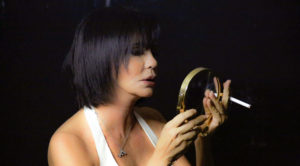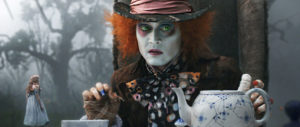In 1564, John Dee was “appointed Royal Advisor in mystic secrets”, official astrologer and magician to Elizabeth I. If he had been born in the 20th century, would the astronomer, scientist and occultist have ended up writing for the News of the World?
That, after all, was the destiny of perhaps the most famous British astrologer of the 20th century: Mystic Meg, who died last week. Known as Meg Markova, but born Margaret Anne Lake, she became so identified with the power to predict the future that “Mystic Meg” passed into everyday language as a byword for prognostication.
It might be tempting to imagine that the modern age is so secular, scientific and disenchanted there is no modern-day role for a magician other than popular entertainer. How else to describe the “asparamancer”, who foretold the death of the second Queen Elizabeth last year in a pattern of falling asparagus spears?
But if you think there are no sorcerers left, you are looking in the wrong places. In fact, thanks at least partly to John Dee, it’s more accurate to say his inheritors now rule the world.
Whether or not you believe there’s anything paranormal “out there”, a great many studies affirm that most of the time when we notice patterns, we’re not conscious of doing so; what can feel like a “hunch” or “intuition” is really just our own powers of unconscious observation trying to get our attention. In this light, one way of understanding the many traditions of “reading” fortunes — whether in Tarot cards, the flight patterns of birds, tea leaves in a cup or the entrails of animals — is as a means of accessing some of these buried powers of pattern recognition, and allowing less conscious and sometimes more accurate observations to inform our conscious choices.
Dee himself used an obsidian mirror of Aztec origin, supported on wax discs inscribed with arcane symbols. He and the alchemist and medium Edward Kelley would gaze into its black, reflective surface, where they reported seeing visions of angels; these were reflected in numerous manuscripts, which form the basis of the Enochian system of magic. Their occult legacy has endured, from the 17th-century politician Elias Ashmole to the 20th-century British occultist and “father of modern Satanism” Aleister Crowley and beyond.
But this is hardly Dee’s only contribution. In the Elizabethan age, “natural science” and “occult science” were seen as intertwined — also seen in the mystical but proto-scientific study of alchemy. Dee epitomised this rich and strange Elizabethan brew of the material and magical, pursuing “thinges Supernaturall, æternall, & Diuine” alongside and often blended with mathematics, cartography and natural philosophy (and possibly also espionage, as the original “007”).
Dee stands alongside Francis Bacon as one of the founding figures of modern science — and the modern world in general. For two of his proposals helped lay the foundations for the age that followed: first, creating a national library accessible to anyone, and second, expanding Britain’s holdings into a “British Empire”, a term he’s credited with coining. While he didn’t live to see either come to full fruition, this vision of mass literacy and expansionary, extractive capitalism were key foundations of the Age of Enlightenment.
This was in full swing two centuries after Dee’s appointment as court magician. But as this world blossomed, in the process (as Dee envisaged) vastly enriching Britain’s wealth and power, so the “natural” aspect of the alchemical sciences came to dominate — even as the “occult” aspect lost status. Thus as Dee’s political vision was realised, his black “spirit mirror” remained in circulation — but as a curiosity, having passed through multiple hands into the collection of Augustan writer, art historian and Whig politician Horace Walpole.
Walpole was 56 in 1773, when Dee finally got his wish and the British Library was founded. That same year, too, Walpole denounced the immense inflows of wealth from the East India Company’s colonial depredations in India, deploring the “sink of Indian wealth” that he saw as turning Britain into a “gaming, robbing, wrangling, railing nation without principles, genius, character or allies”.
But did Dr Dee really “see” things in his black mirror? Was he a fraud, seeking only to befuddle the gullible? Was Mystic Meg only pretending to entertain the crowds?
It is true that in the flurry of affectionate recent articles commemorating the passing of Mystic Meg, there’s a conspicuous lack of efforts to tally up the hit-rate of her predictions on the National Lottery Show every week. But viewers loved her anyway: the theatrics, the crystal ball, the pendulum and the sometimes extraordinarily specific suggestions such that a woman named Pat or Cathy would win with a ticket bought at 6pm (which did not, in fact, happen).
Nor have any of the other predictions made last year by “asparamancer” Jemima Packington come true. Boris Johnson hasn’t returned as PM; Princess Anne is not Duchess of Edinburgh; Prince William hasn’t been made Prince Regent. And the jury is still out on whether Ukraine will defeat Russia.
Even so, enough people found enough resonance to sustain Mystic Meg’s legend, such as the lorry driver who recently remembered gratefully sticking his ticket into the cab copy of the Yellow Pages on her advice, and then winning £15 million. And even if such stories have a touch of back-rationalisation about them, those who point to the patchy hit-rate of popular fortune-tellers to dismiss the power of pattern recognition as mumbo-jumbo don’t understand its real power.
The “libraries and colonialism” Age of Enlightenment in turn laid the foundations for the “digital libraries and post-colonialism” Age of Information we now inhabit. And in this world, you would only dress up your intuition (patchy or otherwise) with a breathy voice and the aesthetics of a Victorian medium if your preferred field was weekend telly and the tabloid press. What, though, if you were a figure more like John Dee — political éminence grise, global traveller, possibly spy? In that case, you’d want the kind of authority that gets you taken seriously by people with real power.
Let’s say you wanted the modern equivalent of a royal charter today, for your powers of pattern recognition, and to offer those powers to guide the modern-day kings and princes in areas of unfathomable complexity, where decisions can make or break fortunes. You wouldn’t use hexagrams or chanting or the power of fear and the uncanny. Such a practice wouldn’t refer to angels, spirits or occult forces, either.
We live in the age that succeeded and built upon the one of science, exploration and British Empire that Dee inaugurated: that is, the American Empire. And in this era, someone who wanted the ear of those with real power would be far more likely to borrow the authority afforded by the exoteric side of Dee’s interests: the field now known just as “science”. Instead of sigils, it would use more mundane symbols to give substance to intuition. Users might call it “data-driven decision-making”.
And nor would such a person bother to learn abstruse tables of Enochian symbols or inscribe wax discs with elaborate symbols, if they wanted to use languages to shape reality. Other arcane languages are now routinely in use, coding the algorithmic trading engines that power the roiling back-and-forth of global finance, and the social media platforms that serve as giant, distorting scrying-mirrors for our collective souls.
Should such an individual want to intervene more directly in these ebbs and flows of reality-shaping meaning, he might, for example, in the wake of a crucial tech-sector investment bank’s failure, take to Twitter and whip up investor panic or (according to some) try to incite bank runs so as to force a government bailout.
In other words, were John Dee alive today he wouldn’t be Mystic Meg. Her role was more akin to what I do: dabbling in pattern recognition, in service as much to entertainment as anything more solemn. Dee’s real inheritors, meanwhile, eschew overt “mystic” symbolism to hide in plain sight, in metropolitan skyscrapers and first-class business lounges. Nor do they stare at the images conjured on a blank piece of obsidian supported by a disc of wax inscribed with mysterious symbols. Instead they (and in fact most of us) spend much of our time staring at messages conjured on a blank surface powered by a tiny chip of silicone covered with mysterious symbols. Which is completely different.
Is this sorcery? Well, not exactly. I dare say the financiers, coders and economists conjuring in realms of pure meaning would (at least in public) vehemently reject the idea that they’re communing with anything beyond the exoteric world. Others, though, increasingly treat the voice behind the silicone mirror explicitly as an entity (or entities), with agency and unknown intentions.
Mystic Meg epitomised an age, and a culture, in which those with unusual powers of pattern recognition were more often than not perfectly happy not to be taken seriously. But in ways we’re only just beginning to grasp, this more innocent age is succeeded by a much more eerie one. And here, as in the age of Dr Dee, the natural and occult sciences are once again unnervingly intertwined.
Disclaimer
Some of the posts we share are controversial and we do not necessarily agree with them in the whole extend. Sometimes we agree with the content or part of it but we do not agree with the narration or language. Nevertheless we find them somehow interesting, valuable and/or informative or we share them, because we strongly believe in freedom of speech, free press and journalism. We strongly encourage you to have a critical approach to all the content, do your own research and analysis to build your own opinion.
We would be glad to have your feedback.
Source: UnHerd Read the original article here: https://unherd.com/






